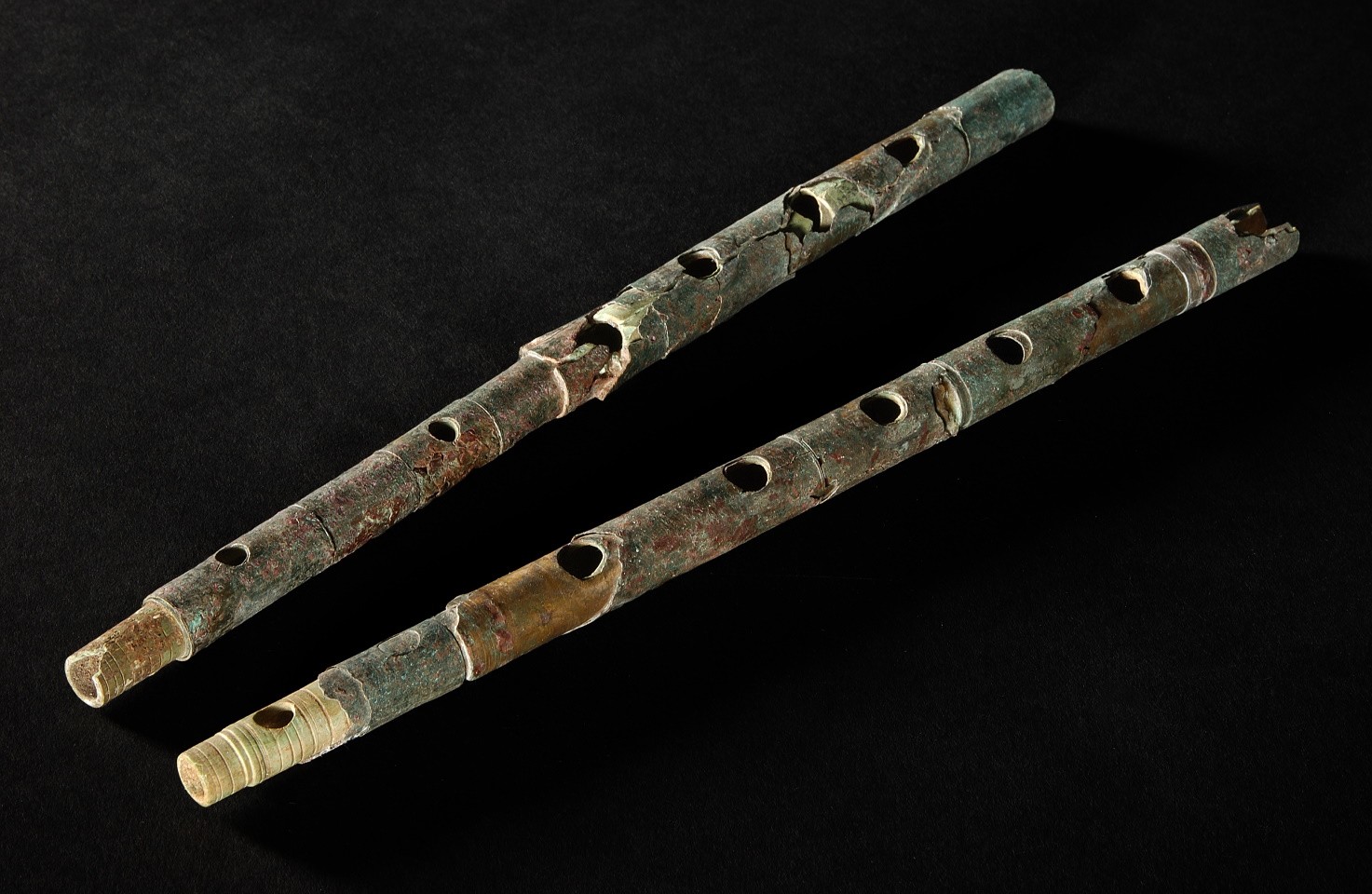This instrument is neither a flute nor a single instrument. The double aulos (αὐλός = "tube") is an extremely rarely preserved example of an ancient musical instrument in archaeological monuments, otherwise only known from pictorial representations.
It belongs to the family of reed instruments, whose modern representatives, familiar to us today, are the oboe and clarinet. Typical features are the two separate cylindrical tubes made of various organic materials and provided with finger holes, as well as a two-part connecting and mouthpiece, which is missing today. Made in different sizes and pitches, the auloi each reached a total range of three octaves.
While auloi were known very early in the eastern Mediterranean, they did not appear in ancient Greece until the 7th century BC, but then became the most important wind instruments. Athena is regarded as the inventor of the aulos.
The aulos usually had two cylindrical or slightly conical melody tubes that were not connected to each other and were held in a V-shape when played. The pipes were made of bone, reed or wood, and in later times also of metal or ivory. Between the playing tube (bombyx) and the mouthpiece (zeugos) sat two egg-shaped or trapezoidal thickened sections, the holmos and the hypholmion.
In the oldest surviving instruments, each tube has five finger holes, including a thumb hole second from the top; in addition, there was often a sixth non-handled hole. In Hellenistic-Roman times, the number of holes was greatly increased. The holes could be opened or closed by means of wax or metal rings, which allowed the range to be varied.
Among the Etruscans, such instruments were called subulo. In ancient Rome, the instrument type was called tibia. (AVS)
en

